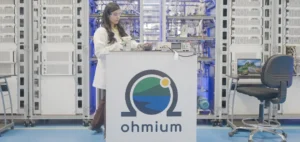India and Japan have established a joint declaration to develop ecosystems for so-called clean hydrogen and ammonia, with a steering body and regular ministerial oversight. The framework covers research, investment, project execution, logistics, and market rule alignment. The bilateral architecture relies on complementarity: renewable production capacity and industrial land in India, technology and demand-side support instruments in Japan. The operational objective is domestic deployment and export-oriented flows.
Policy and financing framework
The declaration is coupled with the Joint Crediting Mechanism (JCM), which enables the exchange of Internationally Transferred Mitigation Outcomes (ITMO) between the two countries. This mechanism creates additional value for emission reductions from eligible projects, subject to measurement, reporting and verification. On the Japanese side, the Japan Organization for Metals and Energy Security (JOGMEC) operates Contracts for Difference (CfD) to bridge the cost gap with fossil references. Logistics hubs are scheduled to organize hydrogen and ammonia imports and to secure port assets.
India’s National Green Hydrogen Mission (NGHM) targets five million tonnes of hydrogen per year by 2030. The national standard caps carbon intensity at two kilograms of CO₂ equivalent per kilogram of hydrogen on a rolling annual average. The Strategic Interventions for Green Hydrogen Transition (SIGHT) program supports production and the industrialization of electrolyzers. In parallel, a domestic carbon market is being implemented with a dedicated registry to align certificate use with national commitments.
Demand targets and standardization
Japan’s revised hydrogen strategy projects demand of about three million tonnes of hydrogen per year around 2030, followed by a progressive ramp-up over the medium term. The Green Transformation (GX) program mobilizes multi-year funding and price-guarantee mechanisms through JOGMEC. National guidelines are evolving toward carbon-intensity thresholds for hydrogen and ammonia based on life-cycle analysis (LCA) on a well-to-gate basis. The bilateral work aims at mutual recognition of certificates to ensure eligibility for support schemes and transferability of volumes.
Methodological alignment is a central element of the roadmap. Convergence is expected on the emissions system boundary, upstream electricity, maritime transport, and, where relevant, cracking of ammonia to reconstitute hydrogen. The objective is to avoid divergence across reference frameworks, facilitate contract bankability, and reduce frictions at import. This shared standardization conditions access to CfD support, integration into the JCM, and traceability across supply chains.
Export projects and logistics flows
In India, several planned industrial complexes position renewable ammonia for export, with indicative start-up milestones toward the end of the decade. Announced unit capacities reach a few hundred thousand tonnes per year, while larger hubs target one million tonnes per year with potential expansion. Framework offtake agreements have been signed with international players, including Japanese energy and maritime companies, to secure volumes and the logistics chain. Contract structures are aligned to indexed pricing with clauses on carbon-intensity compliance.
The projects combine port access, specialized carriers, and receiving terminals sized for regular deliveries. Contract schemes include certification requirements and verification procedures. Operators weigh the allocation between local sales, molecule exports, and the monetization of ITMO under the JCM. Scale-up depends on final investment decisions, the availability of low-cost electricity, electrolyzer costs, and the stability of demand-support regimes.
Uses, demonstrations and technical constraints
In Japan, ammonia co-combustion demonstrations in thermal units have validated rates up to twenty percent of output, with monitoring of operating parameters and regulated emissions. Additional work covers integration into gas turbines, steelmaking processes, maritime applications, and heavy mobility. Storage, handling, and industrial safety requirements shape port specifications. Ammonia cracking is considered depending on end-use and consumer location.
Environmental traceability relies on carbon-intensity measurements compatible with support programs and carbon markets. Bilateral standardization should prevent double counting between contributions to Japanese objectives and India’s national planning. Market participants track guideline updates in order to anticipate documentation requirements. Decision-makers focused on markets can assess the relevance of these flows against supply needs, risk coverage, and compliance.






















